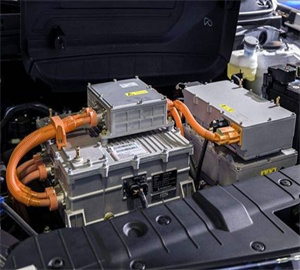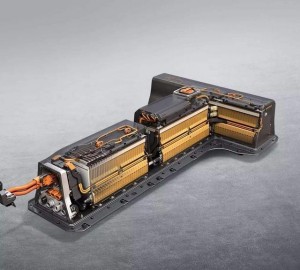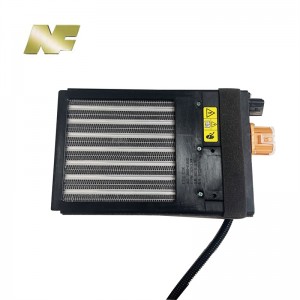The components involved in the thermal management of new energy vehicles are mainly divided into valves (electronic expansion valve, water valve, etc.), heat exchangers (cooling plate, cooler, oil cooler, etc.), pumps (electronic water pump, etc.), electric compressors, pipelines and sensors, and PTC heaters.
Battery Thermal Management(HVCH)
Compared with traditional fuel vehicles, the new energy vehicle thermal management system adds battery thermal management system. In cooling mode, the heat exchange plate is mainly used to heat exchange the coolant flowing through the battery pack; in heating mode, the PTC method(PTC coolant heater/PTC air heater) is mainly used for thermal management of the battery pack. The new core components are battery cooler and electronic water pump. Battery cooler is the key component to regulate the temperature of the battery pack, generally using a compact and small plate heat exchanger, and the design of turbulence generation structure inside the flow channel of the plate heat exchanger, blocking the flow and temperature boundary layer along the flow direction to enhance the entrance effect and ultimately improve the heat transfer efficiency. Unlike mechanical water pumps that are driven by the engine through the transmission and proportional to the engine speed, electronic water pumps are driven by electricity and the pump speed is no longer directly affected by the engine speed, which can significantly reduce energy consumption and at the same time meet the demand for more precise temperature control of new energy vehicles.




Integrated components
The thermal management technology of new energy vehicles is gradually developing in the direction of high integration and intelligence, and the deepening of thermal management system coupling has improved the efficiency of thermal management, but the new valve parts and piping make the system more complex. Tesla in the Model Y models for the first time adopted the eight-way valve to replace the redundant piping and valve parts in the traditional system; Xiaopeng integrated kettle structure, the original multiple circuits of the kettle and the corresponding valve parts, water pump integrated into a kettle above, significantly reducing the complexity of the refrigerant circuit.
Domestic and overseas new energy vehicle regional development differences, for the domestic thermal management leading manufacturers to provide a stage to catch up. Breaking down the customer structure of the four leading global thermal management manufacturers, it can be seen that more than 60% of Japan Denso's revenue comes from Toyota, Honda and other Japanese OEMs, 30% of Korea Hanon's revenue comes from Hyundai and other Korean automakers, and Valeo and MAHLE mainly occupy the European market, showing strong localization attributes.
New energy vehicles thermal management due to the increase of power battery, motor electric control thermal management and passenger compartment PTC or heat pump heating system, its complexity, the value of a single vehicle far more than traditional fuel vehicles. Domestic thermal management leader is expected to rely on the first-mover advantage of domestic new energy vehicles, rapid support to achieve technical catch-up and scale on the volume.
Post time: Mar-27-2023




